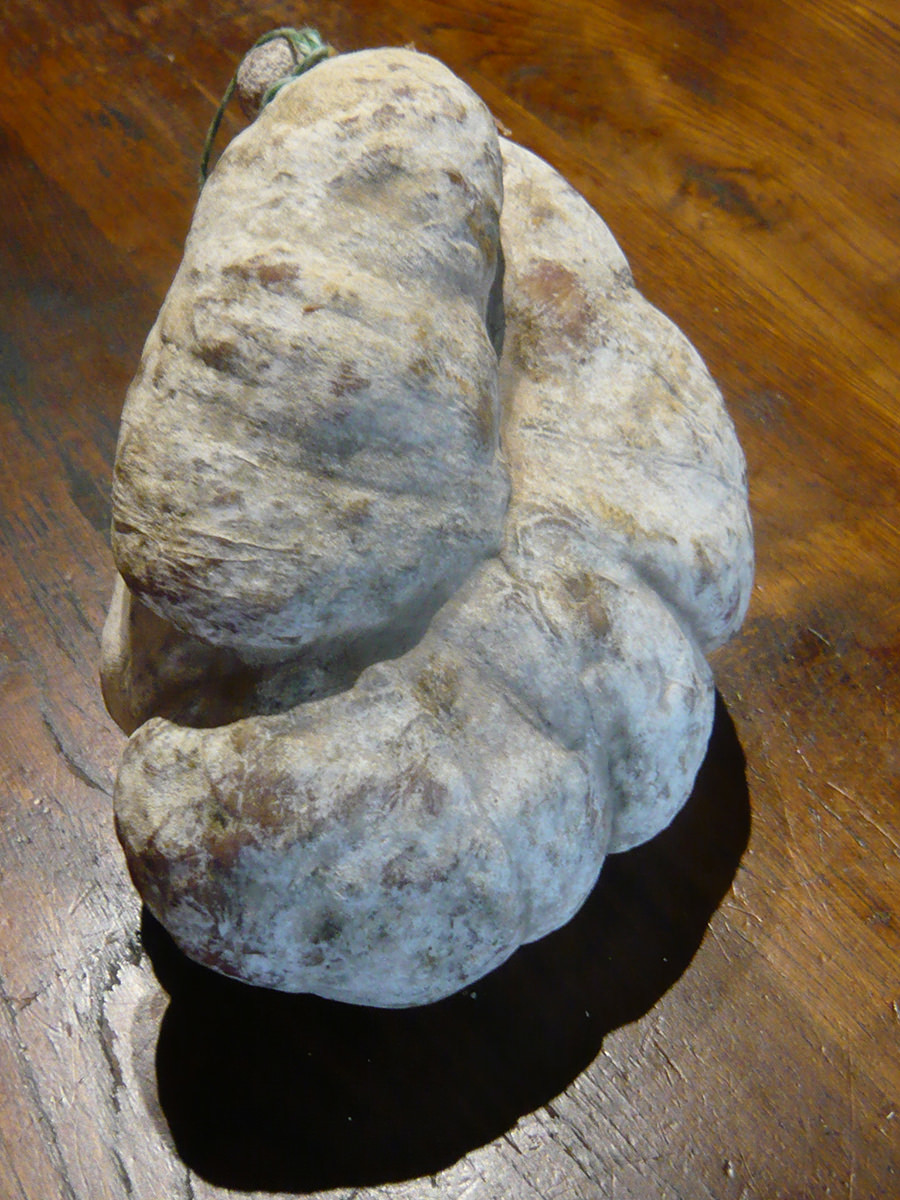The curiously shaped saucisson sec (illustrated below) goes by the equally curious name of jésus (or jésu) in various parts of France. Before attempting to explain how it came to be so called, I should perhaps first describe what meat goes into a jésus and how it is cured. The main ingredient is coarsely minced pork, consisting principally (75%) of the better cuts such as unsalted loin, shoulder and leg, with all their gristle meticulously removed, supplemented by a lesser amount (25%) of back fat. Other ingredients include salt (30g per kilo of meat), a few black peppercorns (both whole and ground) and the casing of the jésus.
Jésus

This casing consists of a pig’s caecum, a large pouch located near the colon which is open at one end and closed at the other. The thickness of the caecum casing is crucial to the curing of the jésus, which can take up to six months. This allows a whitish mould, penicillium nalgiovense, to grow on its surface. The mould helps to give the jésus its fine characteristic flavour.
Because of the caecum’s shape, the jésus needs to be firmly tied up with string during curing to prevent any pockets of air from forming in it. It is sometimes sold with its string still in place. The jésus is at its aromatic best when sliced very finely, like the salami sold in Italian salumerie.
So how did a French sausage come to be called after Jesus of Nazareth? My friends, the food historians Philip and Mary Hyman, suggested I should consult Pierre Rézeau's Dictionnaire des regionalismes de France (De Boeck/Duculot, Brussels, 2001). In this collective work there is a long entry on jésus by the linguist Jean-Pierre Chambon which gives an exhaustive account of the various versions of the sausage found in France. They range from the jésus de Morteau (a speciality from the village of Morteau in the Doubs département, which is smoked on a resinous wood fire and eaten hot) to several dried versions from the Lyonnais, the Basque Country and the Aveyron. I would add that manufacture of the jésus now also extends northwards to the Cantal (see illustration).
According to Chambon, the first attested example of the word jésus being used to describe a sausage is to be found in the Jura département in 1881. The shape of its central bulge was believed to represent the infant Jesus in swaddling clothes in the arms of the Virgin Mary.
But there is a more mundane and less evocative alternative explanation for why the sausage is named after Jesus. Because of its lengthy curing process, it is usually ready to eat at around Christmas time, and more particularly as part of France’s traditional Christmas Eve blowout. Hence the connection with Jesus. Whichever explanation you prefer will, I suppose, depend on how iconographically minded you happen to be.
< Tête de veau · · · Éclade >